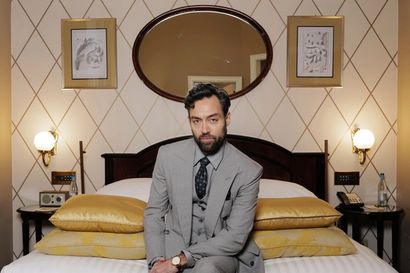You can keep your front-facing cameras and countless megapixels — because real portraits can’t be found on your camera roll. Instead, commissioned portraits are intricately inked and painstakingly painted works of art; much more than a ‘mode’ on your smartphone. These portraits are personal; handcrafted heirlooms-in-waiting that both tell a story and take time to get right.
Of course, spending hours sitting for a portrait may sound strange to the selfie-snapping instant-gratification generation. But it’s well worth it. Invest in a portrait, and it’ll stay with you forever — a one-off, totally unique piece to keep in the family for years to come.
Annabel Elton is Head of Commissions at Mall Galleries, and a member of the Royal Society of Portrait Painters. With a major London exhibition planned for later this spring, where prospective portraitees can seek out the perfect artist for them, we asked Elton for her top tips in taking your first step on this journey — and what considerations and decisions you’ll be expected to make along the way…
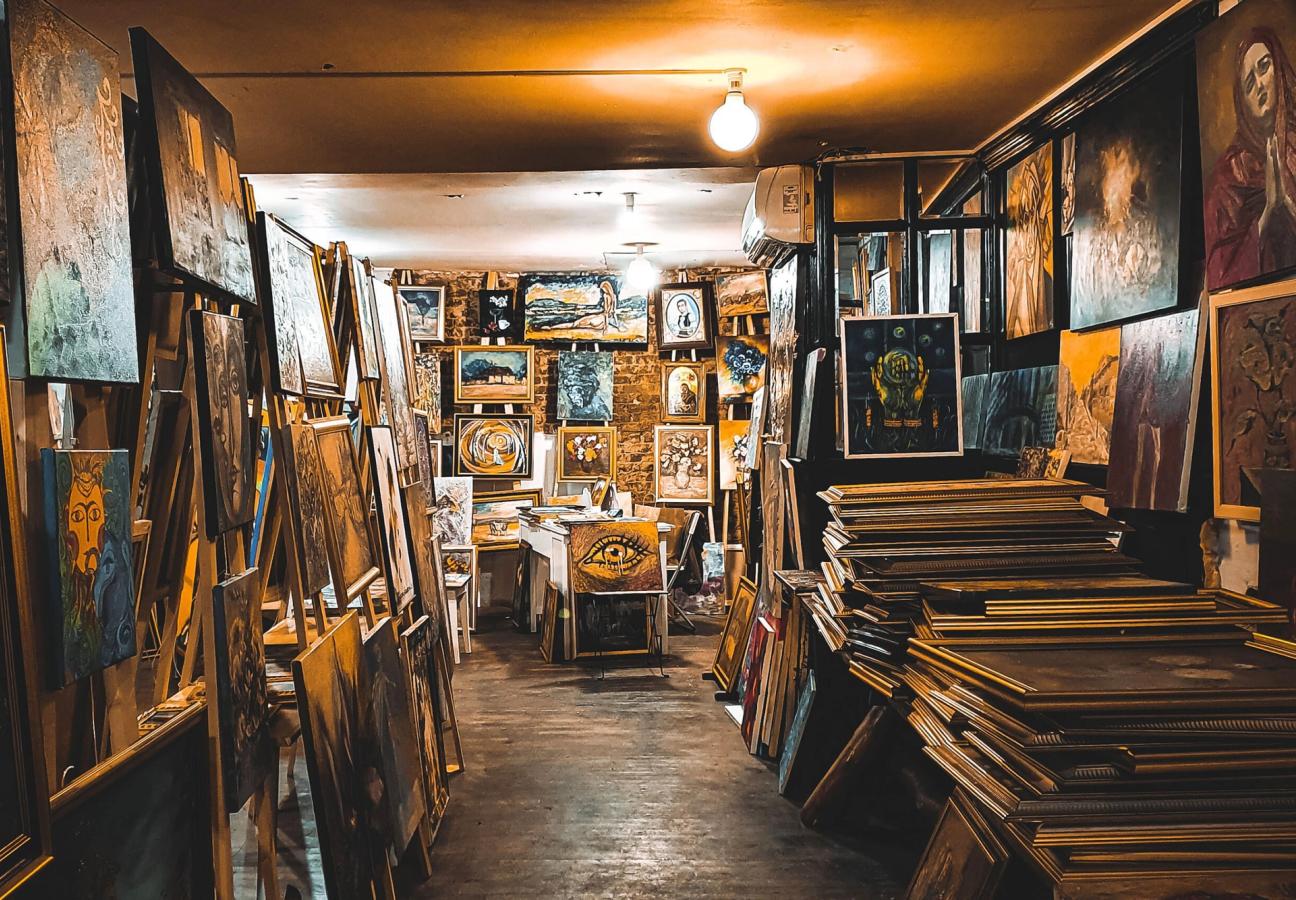
Why do you want to commission a portrait?
It’s the first question you should ask yourself. Even the humblest of us would probably enjoy locking eyes with an oil-rendered version of ourselves, but are you doing this for the gilded frame alone? Or is there a deeper reason you want to be immortalised on canvas? According to Elton, people usually lean towards portraits for one of two reasons.
“They are nearly always commissioned for a combination of love and legacy,” says Elton. “It is wonderful to create a work of art that encapsulates the essence of a person forever. Whilst the word ‘vanity’ might be bandied around, in my experience, a person commissioning a portrait of themselves does it to be part of a work of art, experience its creative process, and perhaps, more importantly, out of curiosity”.
Curiosity, adds Elton, comes into play along the way. Whilst everybody who commissions a portrait will be on tenterhooks for the big reveal, many people also learn a little something of themselves along the way. “It’s a fascinating journey,” says the Head of Commissions, “as you are transformed through an artist’s imagination and allowed to see a glimpse of yourself through an artist’s eyes”.
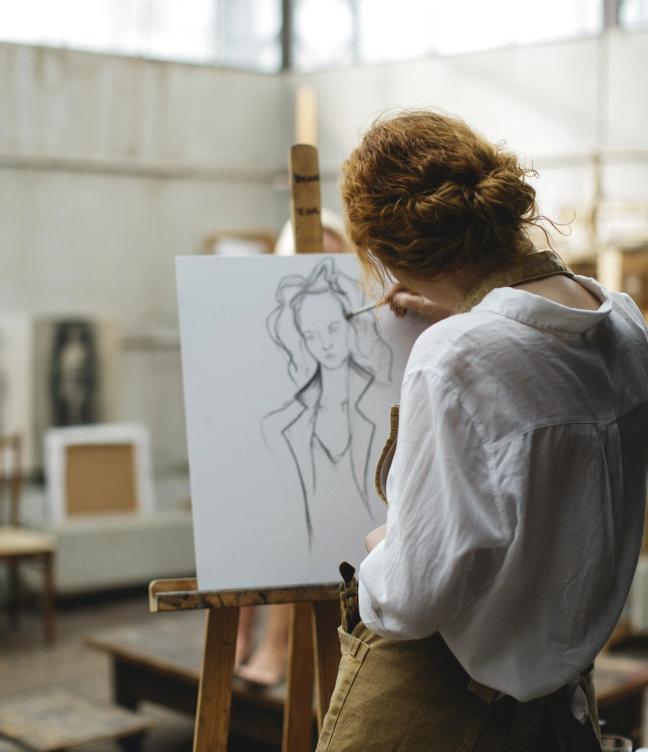

How do you find the artist that perfectly suits your commission?
This is where Elton’s expertise comes in. With many decades of experience, there’s no-one better placed to ‘match-make’ customers and artists, and Elton admits that this is her favourite part of her job. Much like a Savile Row tailor, thumbing through swatch-book after swatch-book in search of the perfect pattern and fabric for your bespoke suit, the Mall Galleries’ Head of Commissions is keen to never rush these first few steps in the portrait-paining process.
“The first conversation would outline the parameters that dictate the pool of artists and the budget to work within,” she explains. “Ideally, you would come to our central London Galleries, where you would go through up to 50 artists’ portfolios. It sounds daunting, but actually, it is playful and fun. This initial stage is quick and instinctive. With our portfolios, you can see enough works by each artist to get a feel for their style without being distracted by look-alike sitters”.
It could be easy, Elton says, to make a mistake at this point — by plumping for an artist who has already painted a portrait of someone who resembles you, or the chosen sitter. That’s why instinct is key. Then, when you’ve whittled down your options to a longlist, the second stage moves at a slower, more considered pace.
“And, using my knowledge of the artists and listening and reflecting on your perspective, I guide you to the perfect artist for you,” says Elton. “Once you are confident that you have made the right choice, it is time to meet your chosen artist to talk over the commission and get a feel for each other”.

What else should you consider before this meeting?
“You don’t need all the answers,” says Elton. But the Head of Commissions still thinks it’s worth having a couple of ideas up your sleeve. Though the artist may have their own input — more on that later — you should know the answers to at least these four basic points:
- Who is to be in the portrait?
- Where will it be positioned, and how large a work you would like?
- Which medium you would prefer?
- How much you can comfortably spend?
It might be worth measuring the place where you’d like to hang your portrait, Elton advises. And, she adds, you should note that when artists talk about canvas or ‘sheet’ size, this rarely include the size of a frame. Additionally, with regards to mediums, Elton advises you educate yourself on the options: “Oil, acrylic — or a drawn medium such as pastel, charcoal, pencil, chalk or sanguine [a reddish-brown chalk]”.
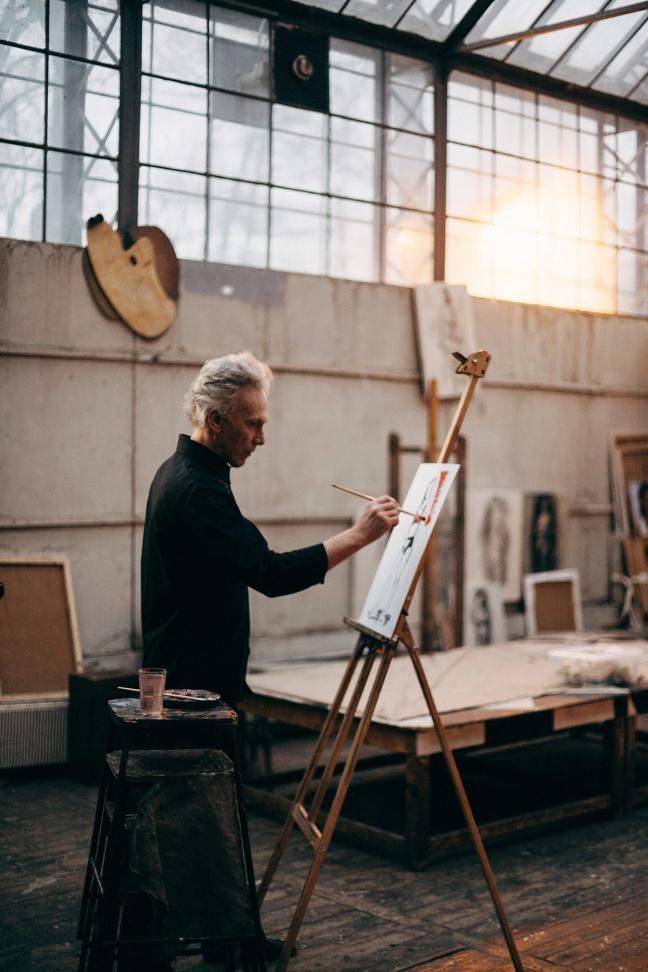

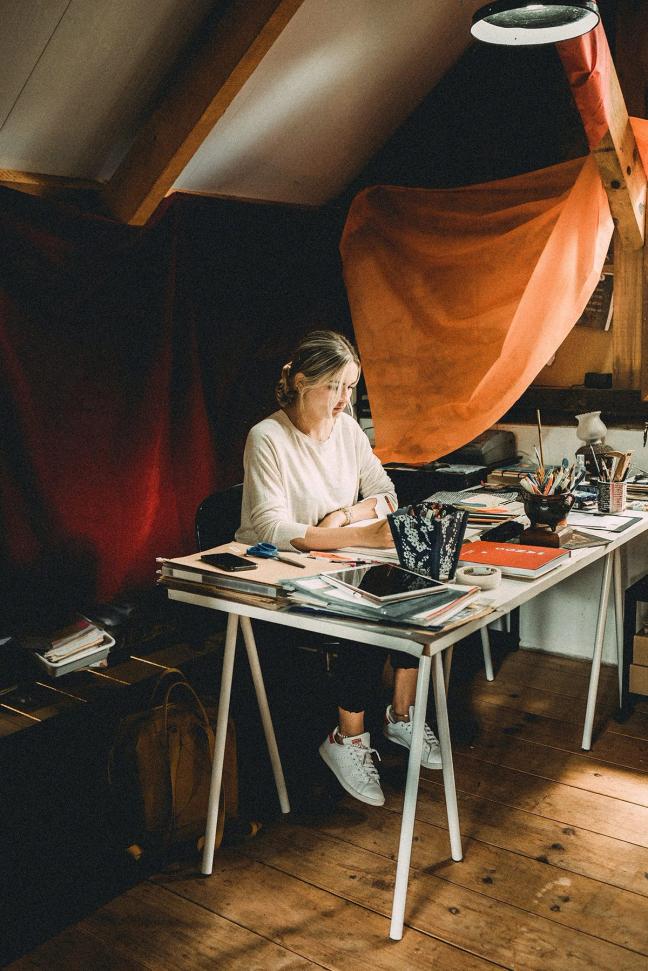
How do artists’ various creative methods differ?
It’s likely the biggest, most burning question from prospective portraitees. How much sway will your chosen artist have over your final painting or artwork — and will they take the lead on composition, clothing and overall tone of the piece? There’s a simple answer, Elton explains; it entirely depends on which artist you choose.
“Some work very collaboratively; others work carefully on the brief with you, and then don’t expect any comment until completion,” she says. “Our portrait painters are very experienced so help with questions about what you should wear and what makes a good composition. They will also be aware of the effect of lighting.
“Your firm commitment to the portrait begins only when you book the first sitting,” Elton adds. “Sittings are interesting and enjoyable, and often friendships are formed between sitter and artist”.
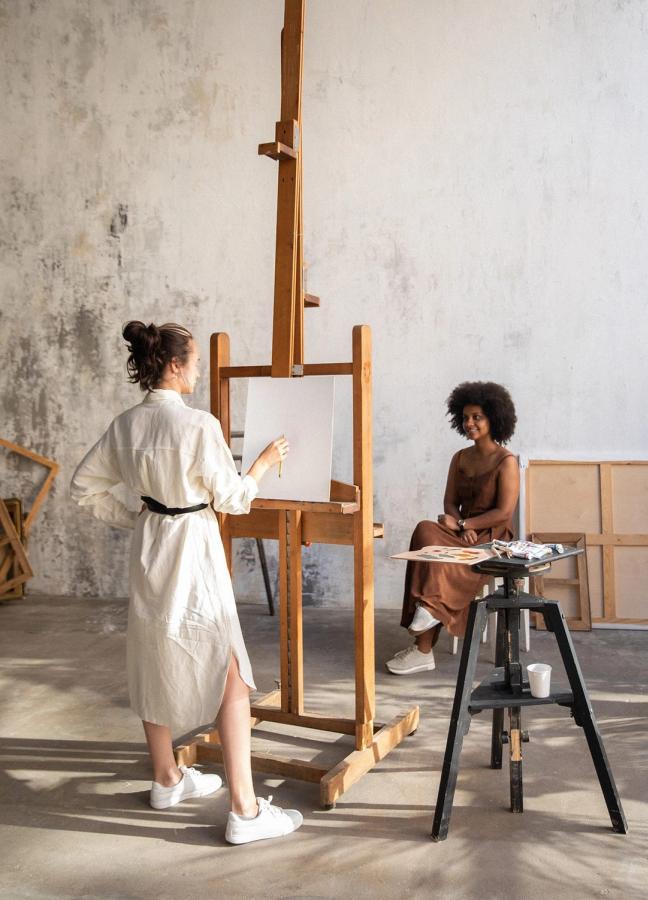
So what exactly is a sitting?
You’ve likely heard the term, but if you’ve never posed for a portrait before, you won’t be aware of the intricacies of these ‘sitting’ sessions. The core of the portrait-painting process, these sessions can vary in length and number — depending on the style and medium of your artwork. But, whether you’ve opted for pencil or pastel, they will always be at the heart of your bespoke journey
“When it comes to sittings, every artist is different,” says Elton. “Most will travel to you, but some prefer the steady light of their studios. Artists working solely from life need 3—10 sittings of at least a couple of hours —not all in pose. But others, for whom photography is part of their practice, can work on as little as one or two sittings”.
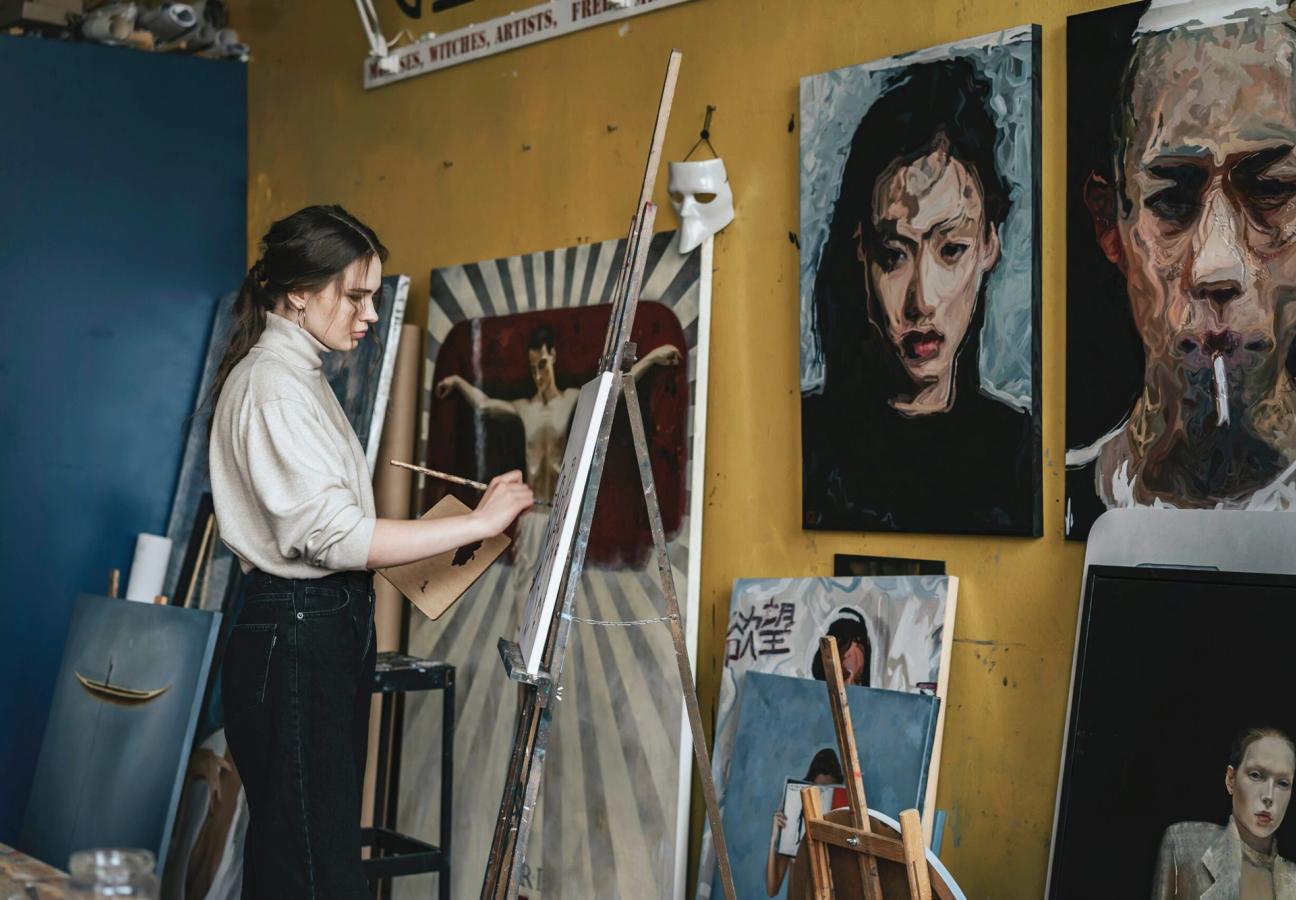
How much are you likely to pay for a portrait?
And so, to the possibly thorny issue of payment. While a painted portrait is more likely to become a future framed heirloom than a selfie, the cost of commissioning an artist for hours of work will preclude most people from committing themselves to canvas. But, for those of you with pockets deep enough and walls bare enough to commission a portrait, how does the payment work?
“Payment is usually in two parts,” Elton explains. “A deposit — usually one-third when you book your first sitting — and a final payment upon completion. But there is no such thing as an ‘average price’. Our members range from £1,500 to over £75,000. But, broadly, most works fall between £6,000 and £30,000”.
Want more sage life advice? Here’s how to master a craft…
Become a Gentleman’s Journal member. Find out more here.

Become a Gentleman’s Journal Member?
Like the Gentleman’s Journal? Why not join the Clubhouse, a special kind of private club where members receive offers and experiences from hand-picked, premium brands. You will also receive invites to exclusive events, the quarterly print magazine delivered directly to your door and your own membership card.


